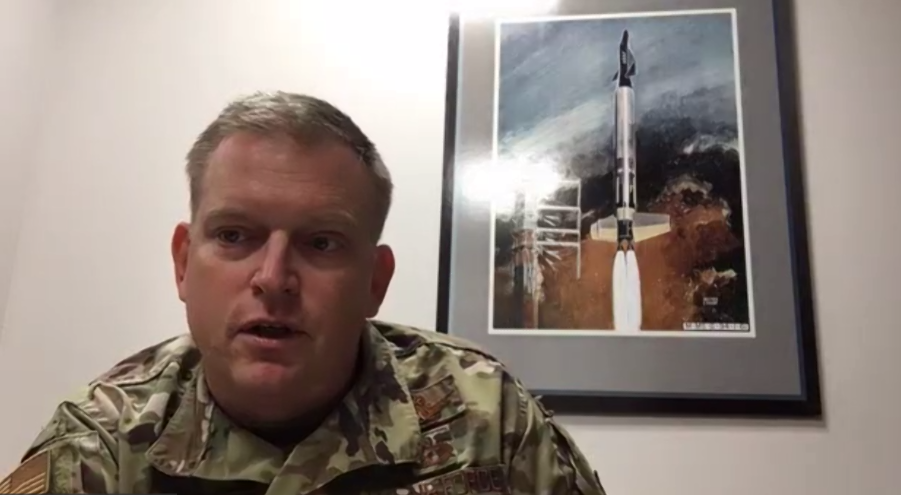The Space Force is thinking ahead to what it might need from rocket providers at the end of the decade, as it plans for the next phase of the National Security Space Launch program.
The service released a request for information on Nov. 10 to open a more formal discussion between the government and launch companies of all sizes on the path forward. Military officials are considering rocket launches for everything from transporting cargo through orbit to points around the globe, to rapidly upgrading and repopulating groups of intelligence and communications satellites if attacked.
“Given the rapidly increasing threat from our nation’s adversaries, the United States Space Force is focused on ensuring our national space capabilities retain their technological advantage and maintain U.S. superiority in the space domain,” the RFI said. “To that end, the USSF is considering establishing a research, development, test, and evaluation program to accelerate the development of transformational commercial space access, mobility, and logistics technologies that can be on-ramped when available.”
The global space industry is undergoing a major transformation as countries and companies plan new ways to use and travel the cosmos. Cutting the cost and time it takes to put a satellite or other spacecraft on orbit has started to revolutionize military planning, which now prioritizes ease of access to space.
“We’re really interested in where innovative industries are seeing launch going in the future and what they’re doing to get to that future,” Col. Robert P. Bongiovi, the Space and Missile Systems Center’s launch enterprise director, said Nov. 19. “It’s not just, how do we get from Earth to orbit? What are the different on-orbit [concepts of operations] that might drive different launch needs, what do we need to be doing to get these future constellations up there?”
Speaking at an AFA Mitchell Institute for Aerospace Studies event, Bongiovi said the RFI will shape Space Force investments starting in 2025. The service recently decided to keep United Launch Alliance and SpaceX as its two major rocket manufacturers under Phase Two of the NSSL program. The companies will handle many key military and intelligence launches starting in fiscal 2022 as part of that effort.
The next phase of NSSL is slated for the late 2020s, when the U.S. hopes to have set up camp on the moon and space operations promise to look markedly different. Bongiovi wants to avoid locking the military into particular requirements that could be obsolete by then, while still imagining how to maintain a growing set of space technologies that terrestrial troops increasingly rely on.
“This is why we’re trying to keep our aperture open,” he said. “Maybe there’s a part of the contract that is very focused on the strategic capability and that’s what gets us to the end of the decade or into the next decade.”
Not everything will be so long-term, though: SMC is “considering [research and development] investments in technologies that can be implemented within the next three to five years, as well as more revolutionary future capabilities which can be realized over the next decade and beyond,” the RFI said.
Officials could shape the program to focus on new technologies that may make military launches easier, cheaper, and capable of handing farther travel to places like cislunar orbit. They may also move away from the Phase Two approach of tapping two companies for heavy-lift rockets and let more participants into the program.
Bongiovi indicated the Space Force will try to shape NSSL to benefit the military, commercial players, and NASA, rather than only considering its own needs.
“We really need to understand better where things are going and where we need to go, and put that priority in place and put it against the rest of the Space Force’s priorities” to see what works, he said.
